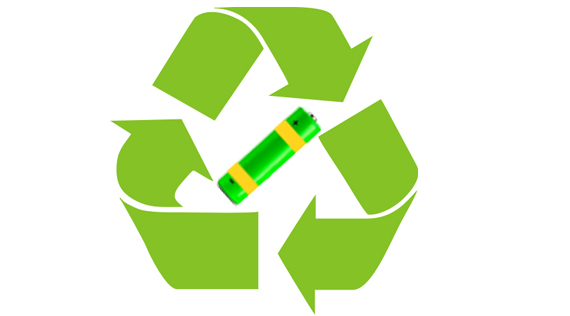
SEATTLE (Waste 360): When it comes to recycling batteries, many people simply don’t know what to do with them or don’t realize that they are recyclable.
A recent survey, commissioned by Call2Recycle and conducted by the Harris Poll, found that about three in 10 Americans don’t believe single-use or rechargeable batteries are recyclable, and another roughly three in 10 are not sure at all. These results spotlight a gap between consumer education and battery recycling.
“Adding complexities to battery recycling is that there are different processes for rechargeable and single-use batteries, such as AA, AAA, 9V or C or D cell,” says Linda Gabor, executive vice president of external relations at Atlanta-based Call2Recycle. “This means that local household hazardous waste and municipal programs that offer single-use or alkaline battery recycling could charge a small fee.”
Danielle Spalding, director of marketing and communications for Wixom, Mich.-based Battery Solutions, agrees that awareness batteries can be recycled is the biggest barrier.
“Most consumers know they should not throw away batteries but don’t know what to do with them,” she says. “Additionally, the ‘where’ is a significant hurdle. Curbside programs often do not accept batteries and consumers are then left seeking out programs.”
Even batteries that are difficult to recycle have value in the circular economy, according to Spalding. Lithium batteries can be easily transported as long as they are packaged correctly with placards that alert transporters to their presence.
“For recyclers like us, internal safety protocols minimize risk and prevent hazardous situations,” she says. “Our specially trained sorters are well-versed in lithium safety, and we work to extend this knowledge to our customers. With safe handling, lithium, cobalt and other critical materials from these batteries can be recovered.”
Gabor says the most effective approach to recycling batteries, including lithium-ion batteries, is to start with putting more onus on the consumer than the manufacturer.
“Consumers need to be more aware of the necessity and benefits of recycling, including how it minimizes the use of natural resources and reduces solid waste. Consumers would then be more inclined to identify, remove and place batteries into a recycling stream,” she says.
After batteries are collected, they are sorted by type and chemistry. Once they are sent to a processor, the batteries are broken down into raw components that can be reused for other purposes or products. Metals, like aluminum, zinc, lead and nickel, can be recovered.
For example, used alkaline batteries are recycled into steel and new products like sunscreen and road asphalt aggregate. Lithium-ion batteries are often recycled into steel, stainless steel or new batteries, according to Gabor.
Each battery chemistry has its own pathway to material recovery, says Spalding.
“For example, the lead acid battery market is almost circular with nearly 99 percent of all lead batteries recycled. New lead batteries contain more than 80 percent of recovered lead battery material,” she says. “Additionally, the alkaline battery—the most common household battery—has a recycling process that breaks it down into steel, zinc-manganese concentrate and a paper-plastic-brass fraction. Elements are then sold back into the secondary commodity market for reuse in areas such as fertilizers.”
The two battery recyclers also offered their top five tips for safely disposing of batteries. For Call2Recycle, Gabor suggests the following:
Courtesy: www.waste360.com
| Copper Scrap View All | |
| Alternator | 0.32 (0) |
| #1 Copper Bare Bright | 3.76 (-0.01) |
| Aluminum Scrap View All | |
| 356 Aluminum Wheels (Clean) | 0.73 (0) |
| 6061 Extrusions | 0.64 (0) |
| Steel Scrap View All | |
| #1 Bundle | 460.00 (-15) |
| #1 Busheling | 480.00 (-15) |
| Electronics Scrap View All | |